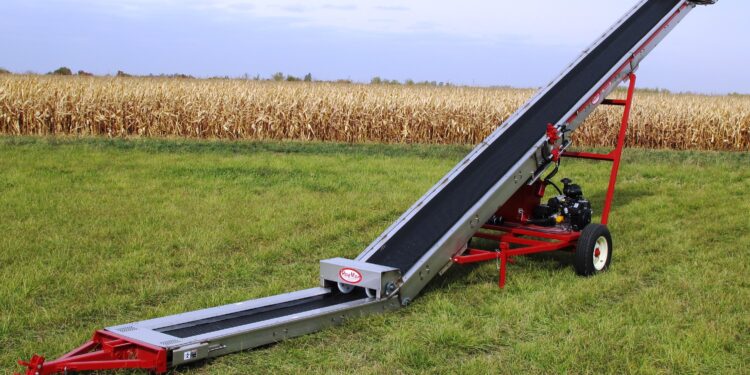In the ever-evolving landscape of agriculture, innovations continue to drive progress. One such innovation that has had a transformative impact on farming practices is the adoption of farming conveyor belts. These remarkable machines have revolutionized agriculture in ways that were once unimaginable. In this article, we will delve into the world of farming conveyor belts and explore the profound effects they’ve had on the industry.
The Birth of a Game-Changer
What Are Farming Conveyor Belts?
Before we dive deeper into the impact, it’s crucial to understand what farming conveyor belts are. These are specialized conveyor systems designed to automate the transportation of various agricultural products. From crops like wheat, corn, and soybeans to livestock feed and even manure, conveyor belts have become a versatile solution for farmers.

Efficiency Redefined
One of the most striking impacts of farming conveyor belts is the increased efficiency they bring to agricultural operations. These machines can transport large quantities of produce and materials over long distances with minimal human intervention. As a result, the overall productivity of farms has significantly improved.
Transforming Agriculture
Precision in Farming
Precision agriculture is a term that has gained prominence in recent years, and farming conveyor belts play a pivotal role in its implementation. These belts enable precise control over the movement of crops and materials, ensuring that every element of farming is meticulously managed. This precision not only enhances yield but also minimizes waste.
Labor and Cost Savings
Traditionally, farming has been a labor-intensive industry. However, the introduction of conveyor belts has reduced the need for extensive manual labor. This, in turn, has led to substantial cost savings for farmers. With conveyor belts taking care of transportation, human resources can be redirected to more specialized tasks, further increasing efficiency.
Environmental Benefits
Sustainable Agriculture
As global concerns about environmental sustainability continue to rise, farming conveyor belts have emerged as champions of eco-farming. By optimizing the use of resources and reducing waste, these systems contribute to more sustainable agricultural practices. The controlled transportation of fertilizers, pesticides, and crops minimizes soil and water contamination, supporting the health of ecosystems.
Reduced Carbon Footprint
Farming conveyor belts also help reduce the carbon footprint of agriculture. By streamlining operations and minimizing the use of heavy machinery for transportation, they contribute to lower greenhouse gas emissions. This eco-friendly approach aligns with the growing demand for environmentally responsible farming.
Future Prospects
Technological Advancements
The future of farming conveyor belts holds exciting prospects. With ongoing technological advancements, these systems are expected to become even smarter and more efficient. From integrated AI for crop sorting to enhanced durability, these innovations will continue to shape the future of agriculture.
Global Adoption
The adoption of farming conveyor belts is not limited to a specific region or type of farming. Their benefits are recognized globally, and as more farmers embrace this technology, its impact on agriculture will only intensify. In an era where food security and sustainable farming are paramount, conveyor belts are set to play an increasingly pivotal role.
Conclusion
Farming conveyor belts have emerged as a catalyst for change in the agriculture sector. From enhancing efficiency and precision to promoting sustainable practices, their impact is undeniable. As the industry continues to evolve, these innovative machines will remain at the forefront, revolutionizing the way we produce food and manage resources.
The adoption of farming conveyor belts is not just a trend; it’s a fundamental shift towards a more sustainable, efficient, and eco-friendly agriculture. Embracing this technology is not only a choice but a necessity in ensuring the future of our food production.








Comments 8